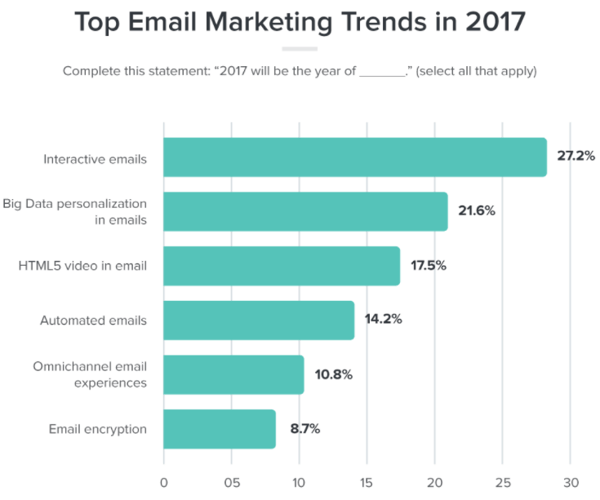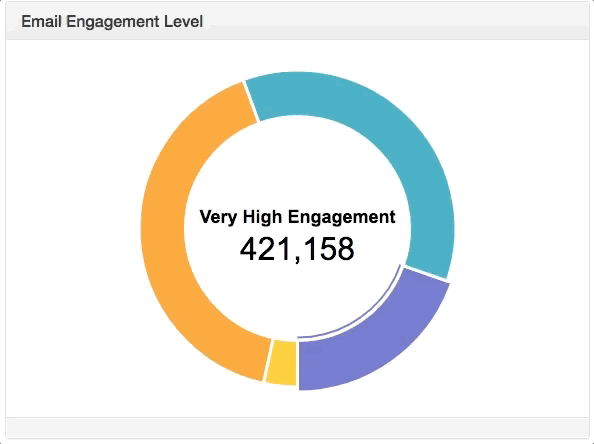The rise of digital marketing has made it increasingly difficult for brands to earn the attention of today’s consumers. With so much noise in the marketplace and no bounds to the amount of information consumers are able to access at whim, marketers are continuing to fight the ongoing battle that is the consumer attention span. Yes, there are challenges, but consumers are willing to engage via email if we give them what they want. Here's how to improve your email digital marketing strategy.
The onslaught of digital and social channels that have surfaced in recent years has drastically lessened our tolerance for advertisements. DVR has made it possible for us to watch our favorite shows without having to sit through 15 minutes of commercials, ad blocking has enabled us to use the Internet without being littered with irrelevant advertisements, and music streaming platforms have allowed us to listen to music without disruptive and redundant ad spots.
Why Should You Care About Email?
A recent study shows that good news is on the horizon for digital marketers. According to an analysis performed by Litmus Email Analytics, the average time recipients spent reading emails has actually increased 7%, to 11.1 seconds, between 2011 and 2016. Meaning, email marketing -- one of the most underestimated forms of marketing -- is now the primary method of reaching and engaging consumers.
Every outdoor brand owns their email. Email is a platform that they control. We track, test and implement new technology tools to assist our outdoor clients with being more than competitive, with the opportunity to dominate a medium with their customers and prospects.Unfortunately, consumer perception of email is really poor. 60% don’t think any brands do email well, 59% agree that most emails are irrelevant and 41% would like to receive less (DMA – consumer email tracker 2017).

"The Mobile Impact"
This trend is the exact opposite of what you’d expect to see given the hyper-connected and distracted nature of today’s consumers. Nevertheless, mobile has been the driving force behind a 16% increase in time spent reading emails over the past six years. How you ask? The answer to that can be attributed to three different sources; email domain providers, content marketers, and consumers.
1) Email Domain Providers
With mobile representing 54% of email opens, email service providers have been forced to make significant improvements to the way in which emails render on smartphones and tablets. As a result, we’ve seen major providers like Gmail, Outlook, and Yahoo adjust email scaling to better fit the mobile viewpoint, promote responsive design to ensure proper formatting, and implement CSS media queries to support mobile-optimized emails.
This prioritization of mobile is not only reflective of today’s consumer preferences in terms of how, when, and where they engage with a brands’ content, but also echoes the fact that the digitally-driven business climate we live in isn’t going anywhere.
2) Content Marketers
As marketers, we’re always focused on representing and communicating our brand, or our client’s brand, in a way that resonates with consumers. Effective email content is one way to do accomplish that, but content alone doesn't cut it anymore. You can have effective copy in your email, but if your email is rendering incorrectly on mobile, it ultimately will not be effective.
In order to do properly send emails, we must be in-tune with the behaviors and preferences of consumers and align the strategies and tactics we deploy accordingly. The growing emphasis marketers have begun to place on email mobile optimization is a perfect example of this.
In the past 18 months, organizations have made a huge push to make their emails mobile-friendly, to the point that responsive design is now the dominant approach when crafting emails
3) Consumer Behaviors
Everything begins and ends with the consumer in mind, and email marketing is no different.
When individuals are faced with even a few seconds of idle time – they instantly turn to their phone or mobile device. Whether it’s social media, the internet, or email - many of the interactions that take place on mobile devices are more relaxed than those of a desktop. Meaning, consumers are more inclined to spend time skimming through emails rather than just hitting the ‘delete’ button when a new email lands in their inbox.
Not only does this highlight the need to leverage email marketing campaigns on a more frequent and consistent basis, but it also demonstrates the growing need to more closely align emails with the format, or device, that consumers are using to consume and engage with their content.
"In marketing, brands need to analyze, adopt, and adapt their strategy to utilize the latest trends and technology to be competitive. To really grow, outdoor industry marketing personnel need to learn, love, and live in the marketing outlets of AI driven content creation, social media, and email targeting."
Six Opportunities and Tools to Help You Succeed with Email Marketing
Here's a list of six changes we can make to improve our email and be more relevant inspired from the folks at The Drum Network.
- Wherever its relevant, use interactive features to engage the customer. Software tool recommendation - Giphy.com and Gif Rocket
- Customers want personalization (no matter all the hubris about Facebook, 75% of consumers say they are more likely to buy from retailers that personalise - Accenture: Personalisation Pulse Check Survey). They want personalized product recommendations, updates, and notifications. Software tools recommendation - Combined e-Commerce integration of Hubspot and Shopify
- Provide subject lines that intrigue, entertain, and catch their eye. With more than 50% of email opened on mobile, subject lines become even more important. Software tool recommendation - Phrasee
- Write emails that will leave them smiling. Have a clear ask with no more than three pieces of information presented. Focus. How many times will it take to scroll your email on mobile? Software tool recommendation - Atomic Reach and 8seconds.
- Automate sending and getting your emails to subscribers when they are known to open and read them. Software tool recommendation - Seventh Sense
- Use the tools available to test. Software tool recommendation - Hubspot
What this Means for Digital Marketers
Email marketing has long been known for having a high return on investment from a monetary standpoint but has often been criticized for being ineffective relative to other marketing mediums. However, the recent insights provided by Litmus Email Analytics and emailmonday provide beyond a shadow of a doubt that email marketing is critical to earning the attention of modern consumers.
As marketers continue to focus their efforts on cutting through ‘the noise’ and driving more brand awareness, they should look to email marketing to better support their efforts. Embrace AI to improve the talent you already have.
Pay attention to your customers. Personalize, personalize, personalize.
"Companies can use personalization to slash customer acquisition costs by as much as 50 percent, increase marketing spend efficiency between 10 percent and 30 percent, and juice revenues by 5 percent to 15 percent", according to McKinsey and Harvard Business Review research cited in the Exchange Solutions’ Retail Personalization report by Gartner. Personalization was identified by 56% of respondents as being the most exciting trend to explore for improving email marketing.
Don't be lured by the sound of "easy money" via "easy send." We have often fallen prey to this temptation. As Mike Donnelly has noted, it's
"because the incentives aren’t aligned. It’s easy and cheap to hit send on your entire list and unlike Facebook that charges you more to spam your audience, the consequences to email marketers are delayed.
Unfortunately, humans are terrible at calculating when costs or rewards are delayed, but signs of a squandered email list equity eventually show up as reduced inboxing rates, deliverability issues, spam complaints and lowered email ROI."
It's not that hard to do it right the first time. Get the Fundamentals of Digital Marketing for the Outdoor Industry.



